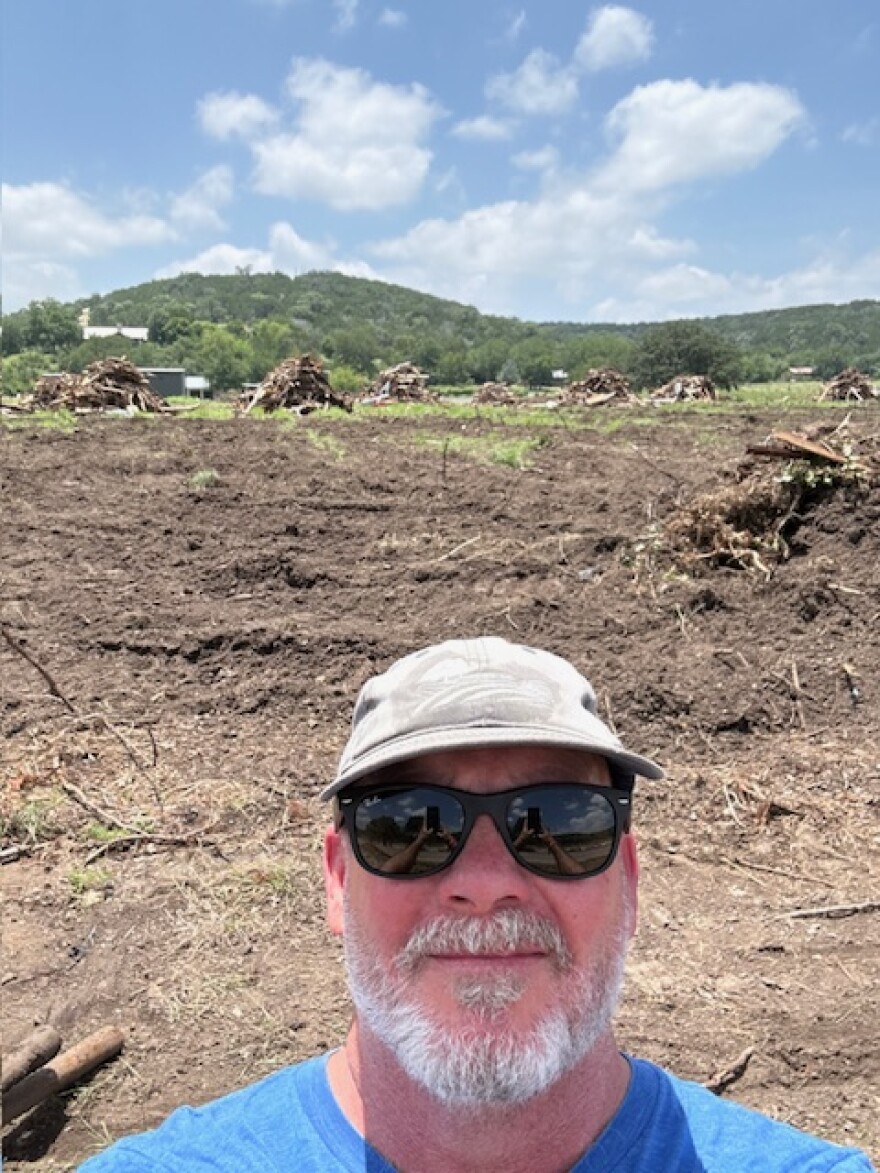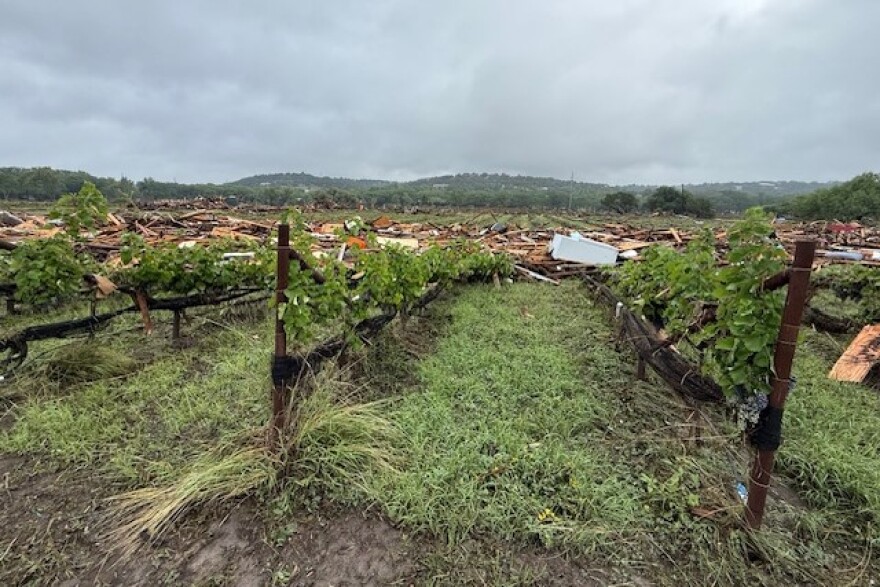John Rivenburgh stood at the edge of what used to be his vineyard and felt the weight of it all settle on his chest.
Rows of vines that should’ve been heavy with grapes just weeks from harvest were gone, ripped out by a wall of floodwater that tore through the Texas Hill Country on July 4 and left behind a tangle of roots, mud and debris.
“It was a complete and utter breakdown,” Rivenburgh said. “I mean, the gravity of the devastation out here still hits me.”
As popular tourist destination, the Texas Hill Country is expected to lose billions in revenue after the floods, with AccuWeather estimating $18 billion to $22 billion in damage and economic losses. One of the biggest draws to the region is the wine: more than 60 wineries welcome thousands of visitors every year.
While most vineyards were spared, Kerrville Hills Winery was right in the flood’s path.
“The entrance was gone. I couldn't see it,” Rivenburgh said. “It was so different out here … our place was quite literally covered in debris.”
Rivenburgh has spent decades making wine in the Hill Country, helping put Kerrville on the Texas wine map. He’s also been a vocal advocate for legislation supporting the industry. In just a single night, years of work were swept away.
But his worries went beyond the vineyard that night. His young daughter was staying at a nearby summer camp when the rain started falling.
They picked her up Friday morning — safe, a relief amid the ruin.
“By the grace of God, we didn't lose any direct family members,” he said. “But there's not one person in this community that hasn't been touched or impacted by personal loss.”
After floodwaters receded, search crews combed through debris along the Guadalupe River, with many gathering near Rivenburgh’s vineyard. Located upriver, directly across from Camp La Junta in Hunt, the 13-acre vineyard sits on a sharp bend — one of the first spots where floodwaters and debris surged, Rivenburgh said. He joined neighbors in clearing debris and helping recovery crews search the wreckage.
“I had a mom walk up to me with a backpack, asking if I could look in a pile of debris,” he said. “To say I melted into a wreck is an understatement.
“This is the hardest thing I've ever navigated in my entire life,” Rivenburgh added. “I'll never forget that.”
Rivenburgh doesn’t know if the woman ever found her daughter. As of Wednesday, at least 135 people were confirmed dead and two were still missing.

As for the vineyard, Rivenburgh figures the flood destroyed about 90% of his vines. Some were uprooted entirely. Others were buried under debris. Just two to three weeks from harvest, the flood will likely cost his winery more than $1 million this year alone.
And while many wineries in the region escaped direct flooding, the heavy rains have still disrupted this year’s harvest, according to January Wiese, president of Texas Hill Country Wineries.
“As farmers, we hate to cuss the rain. We love the rain, we need the rain — but this was a lot,” Wiese said. “The vineyards are still muddy, so it’s difficult to get tractors in.”
Wiese said it’s too soon to know the full impact on the region’s wine industry. For Rivenburgh, the damage is clear: it’ll take at least five years to replant and retrain young vines before they’re mature enough to produce again. He plans to rebuild on the same land, right off the Guadalupe.
In the meantime, he’s salvaging what he can, clearing debris and leaning on his tight-knit community. Other winemakers have already offered support. Volunteers even drove in from West Texas this week to help.
“Every day there's a little win, there's a little something that's like a sparkle of positivity,” he said. “I try to look at the beautiful parts of humanity that have come out of this and not dwell on any of the negative things that I've seen.”




